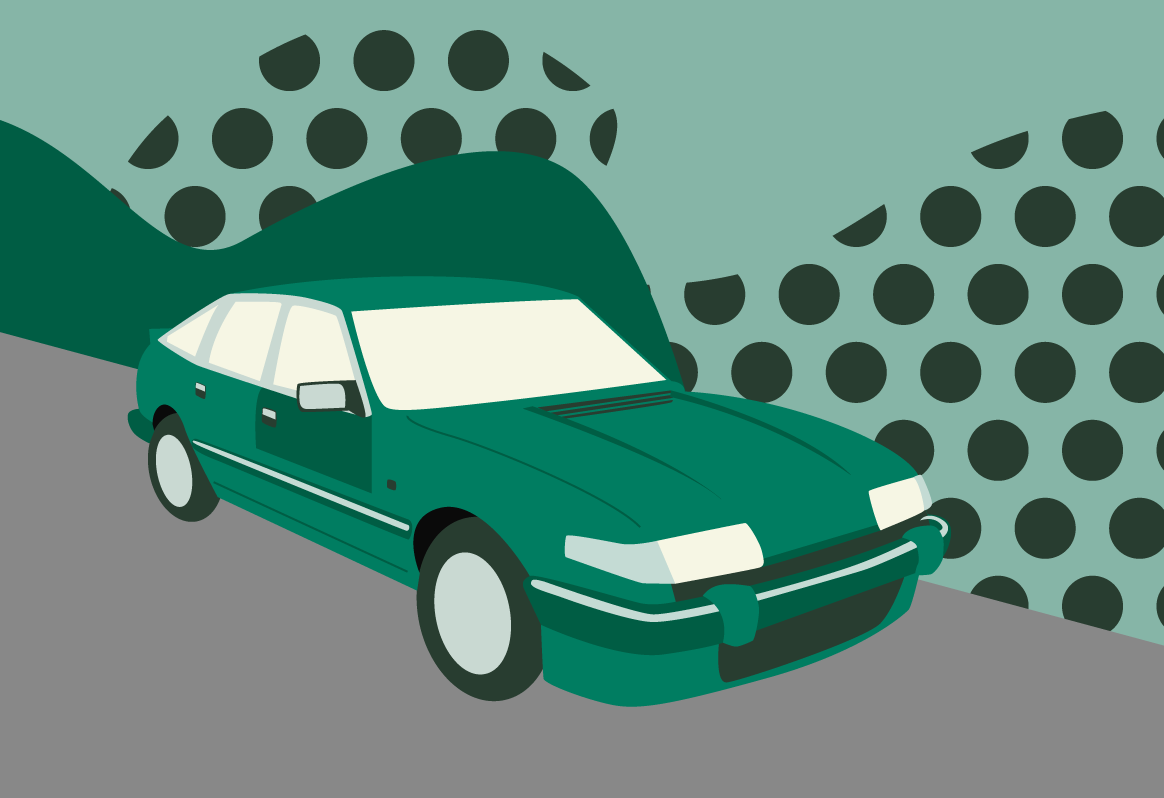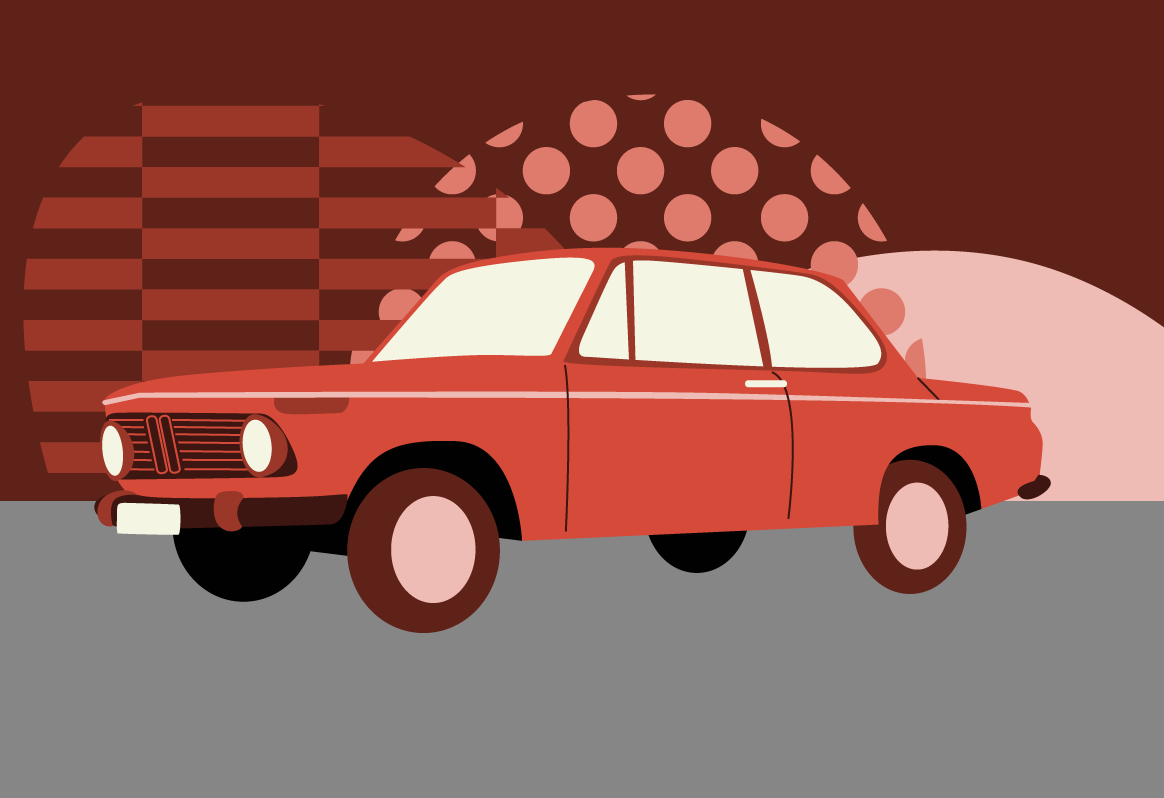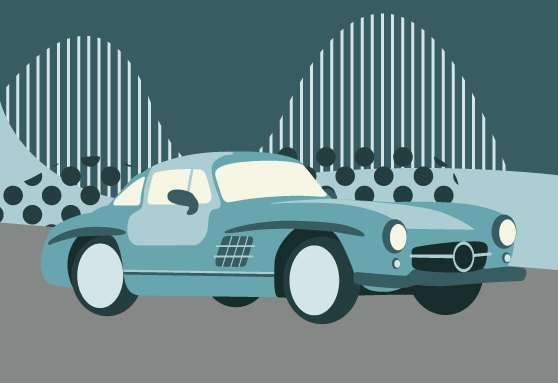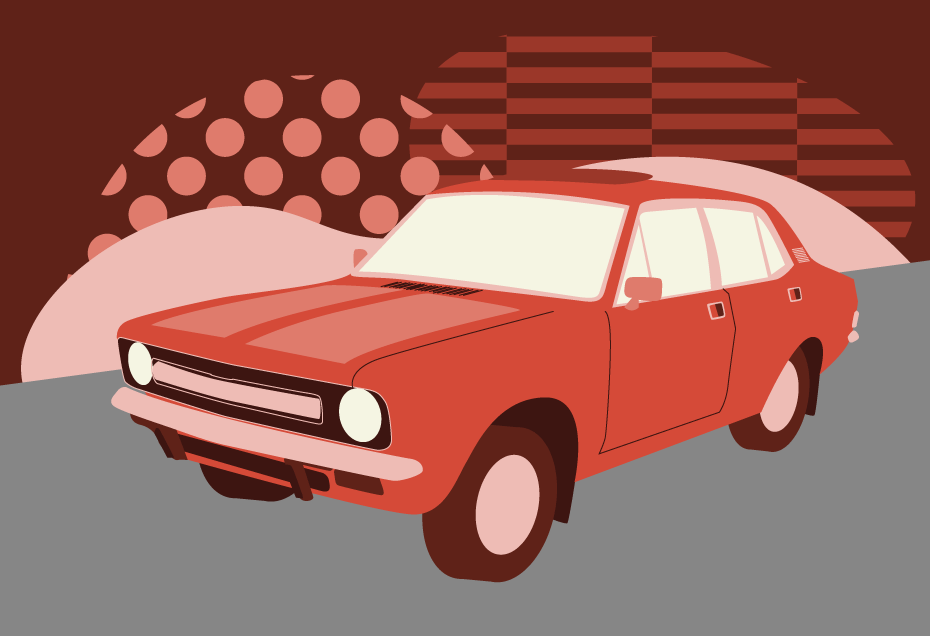The Porsche 968 was the final evolution of the marque’s front-engined sports cars that started back in 1976 with the 924.
It wasn’t a commercial success, with only 12,776 of the 3-litre cars made between 1992 and 1995.
But that makes them all the more rare today and, in the mighty 968 Club Sport, Porsche created one of the great sports cars of the era.
The Porsche 968 story begins back in 1976 with the birth of the 924, the company’s first front-engined, water-cooled car.
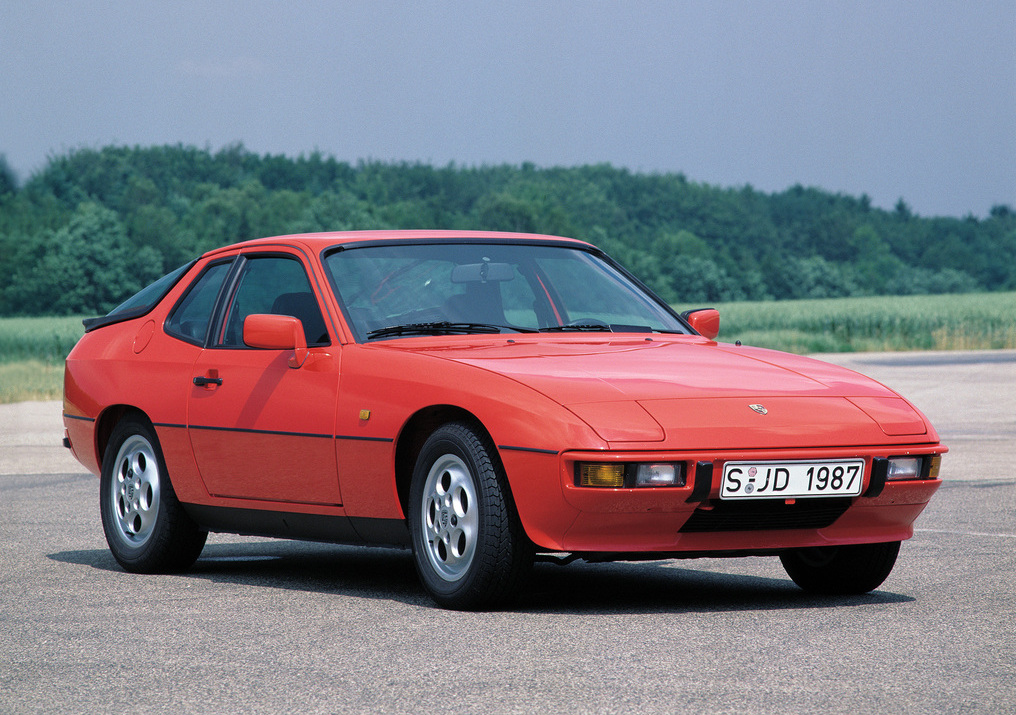
Porsche took on sole responsibility for the 924 after Volkswagen, which had wanted a new flagship sports car, pulled out of the joint project in the wake of the 1970s oil crises.
Although derided by the Porsche purists, not least because of its Audi-derived 1984cc engine, the 924 sold well, and did wonders for the company’s finances.
It was joined in the line-up in 1982 by the 944, a revision of the 924 platform and packing a four-cylinder, 2.5-litre engine of Porsche’s own design (also later fitted to the 924).
Handling and performance were much-improved, with the engine expanded to 3-litres – the largest production four-cylinder engine of the time – for the 944 S2 of 1989.

But the basic design had been around for a long time, and sales were on the slide. It was clear the car was in need of a more major refresh.
Cash-strapped Porsche started work on what was to be the 944 S3 in early 1990, but soon realised that so many new or revised parts were to be used it was effectively a brand new car.
The Porsche 968 was born.
To save costs, production was switched from Audi’s Neckarsulm plant to Porsche’s factory at Zuffenhausen.
Porsche 968 design and spec
Designed by Harm Lagaay, also responsible for the 924 and 944, the 968 was an attractive blend of old and new, with a 928-style nose and headlight treatment.

There were hints of the 911, and the rear retained echoes of the 944, with a refreshed tail-light arrangement.
The interior was mostly retained from the 944 S2, with some new switches and control knobs.
There was no need to unduly meddle with the 944 Turbo’s superb chassis, while the brakes – Bosch ABS with Brembo aluminium callipers on vented discs – were also carried over.
Under the bonnet, however, there were big changes.

The 3-litre inline-4 from the 944 S2 was still there, but it was significantly revised, with a new dual-mode intake manifold, lighter crankshaft, crankcase and pistons, and a higher 11.0:1 compression ratio.
Beneath a beautiful twin-cam cylinder head with a polished aluminium cover lies the real secret to the 968’s newfound levels of horsepower (236bhp from 208bhp): Porsche’s VarioCam variable valve timing.
VarioCam uses a central camshaft chain drive, with the chain tension modified via electronic instruction from the Bosch Motronic ‘brain’, varying the intake camshaft by up to 15 degrees.
When the tensioning saddles are extended, between 1500rpm and 5600rpm, the torque curve is enhanced, providing superb mid-range performance.
Indeed, Porsche claimed that the unit was superior in torque delivery to most sixes and eights of similar capacity.
Its 225lb ft was the highest for any normally aspirated 3-litre engine, regardless of the number of cylinders – the V6 Honda NSX boasted only 210lb ft.
As well as the engine changes, there was a choice of a new six-speed manual gearbox and Porsche’s dual-mode four-speed Tiptronic automatic.
The new car – Porsche maintained that 80% of it was new – was available either as a coupe or cabriolet.
Porsche 968 on the road
Like the Porsche 944, the 968’s rear transaxle helped give it an ideal 50/50 weight distribution, and it was revered for its handling by early road testers.
Not all were entirely convinced by such a large capacity four-cylinder motor though, with its inherent vibrations and occasional coarseness.

One thing can’t be disputed: it shifted, hitting 60mph in 6.5 seconds on its way to 156mph.
But for an entry level model, it wasn’t cheap, at more than £32,000 it was under attack from, in particular, less costly Japanese performance coupes like the Nissan 300ZX Turbo.
Writing in Motor Sport magazine in September 1991, Jeremy Walton was distinctly underwhelmed by the revised new powerplant, which was “not the smoothest of units”.
“Even the counterbalancer shafts of Lanchester/Mitsubishi ancestry have a job to tame all the resonances and vibrations that emanate,” he added.
“For those that like to work for their fun beyond 5000rpm, there are more rewarding motors.”
Georg Kacher, for Automobile Magazine, agreed that the big four cylinder unit “sounds a bit more hoarse” than its 944 predecessor’s, and “needs to be pushed harder to deliver the goods”.
Adrian Flux Classic Car Insurance
More positively, though, the “power supply is creamy and progressive, the throttle response is razor sharp and the willingness to rev is remarkable”.
He reported that Porsche hoped to produce up to 8,000 cars a year, and Brian Bowler, Porsche Cars North America (PCNA) president and CEO, said the 968 was “critical to us and our dealers”.
He said the 968 was not just a stop-gap between the 944 S2 and mid-engined Boxster, which was already in early development before the 968 went on sale.
The concept of a front-engined, rear-drive/transaxle sports car was here to stay.
In the event, it wasn’t.
World class handling and steering
There were plenty of positive noises from Wes Raynal, writing in Autoweek, who noted that “the joy with the 968, as with other Porsches past and present, is in the driving”.
“In a nutshell, the 968 is faster, and stops, rides and handles better than the 944 it will replace,” he added. “One of the most glorious aspects of a ride in the 968 is the steering. If there’s a production car out there with better steering communication, or feel, or turn-in quickness, or straight-on-centre tracking, please, please let us drive it; we haven’t yet had the pleasure.
“We can vouch for the car’s performance and handling and say that yes, the 968 is a great car. It’s for you to decide whether it’s a great car for the money.”
Road & Track agreed, describing a drive at speed: “The tautness of the car, the precision with which it can be placed and controlled, and the efficiency of the brakes inspire the utmost confidence.”
There were doubts again, though, over the asking price – in the USA $39,850 for the coupe and $51,000 for the cabrio.

Even though this was cheaper than the outgoing 944 S2, the 300ZX cost less, and the soon-to-arrive Mazda RX-7 would undercut the Porsche by a whopping $8,000.
CAR summed things up for struggling Porsche in a face-off between the two when the RX-7 reached these shores in 1992.
“As if Porsche hadn’t enough problems! Sales have slumped as the world, almost inexplicably, has fallen out of love with its cars.
“And now that the recession is ending, a host of Japanese upstarts have carefully targeted the Stuttgart car maker’s ageing products.”
After the 300ZX came the Honda NSX for 911 money, and now the smooth, rotary power of the a much-improved RX-7 was aiming its guns squarely at the 968.
While the Mazda was an all-new design, not just a revamp of its predecessor, Porsche had produced “a heavily compromised basic design, but expertly and painstakingly developed”.
Despite high praise for a “classy, sturdy machine” that “felt almost hewn from the solid”, and “wonderful handling”, CAR plumped for the Mazda.
“Porsche, poor embattled Porsche, now has another hurdle to jump before it can extricate itself from the mire.”
Tha RX-7 would go on to sell more cars in one year (26,654 in 1992) than the 968 did in its entire production run.
Porsche 968 Club Sport
In 1992, just 156 customers in the UK bought a Porsche 968, but something very special was just round the corner.
The track-focused 968 Club Sport was 50kg lighter than the standard 968, with a host of features stripped out.

Gone were the back seats, air conditioning, electric motors for windows, mirror, seats, rear wiper, alarm and central locking, and some of the sound deadening.
Lightweight racing Recaro seats from the 911 RS were fitted, and Porsche even removed the cassette holder, centre console storage space, air bag and the luggage compartment cover to save as much weight as possible.
Buyers could choose from four colours: Guards Red, Speed Yellow, Maritime Blue, Riviera Blue, or Grand Prix White, with colour-matched wheels if they wished.
In an echo of the 911’s Carrera graphics, customers could have Club Sport written along the side between the wheels.
The pauper’s spec carried a significant price reduction – £4572 cut from the standard 968 – and resulted in a pick-up of 968 UK sales on the back of a series of glowing road tests in the motoring press.
Such was the fuss around the Club Sport, it became something of a halo car, attracting customers into showrooms, where they may have been persuaded to pay the extra cost for all the bells and whistles of the standard 968.
For those put off by the absence of creature comforts, Porsche introduced the UK-only 968 Sport in 1994, which retained the ethos of the CS while adding back in an alarm, power windows and mirrors, central locking, sunroof and rear seats.
The Sport was still much cheaper than the standard 968, and outsold it by some distance.
“One of the greatest”
It’s not often a motoring magazine completely changes its mind about a car, but that’s what happened when Motor Sport got hold of the 968 CS for a road test in March ‘93.
Having sampled no fewer than seven 968s since the car’s launch, the magazine admitted it would “not expect extra experience to change our opinions significantly”.

“But in the case of the 968, the CS has completed a conversion from apathy to positive enthusiasm. From start to finish, we loved it. It’s a pure driving delight.
“The price tag (£28,975, against the standard car’s £33,547) should be enough to tempt most potential 968 customers.”
Self-confessed 911 fanatic Ian Kuah was another journalist to revise his early impressions of the 968.
Writing in 911 & Porsche World, he said: “When the 968 arrived, I was not entirely convinced about this obvious facelift to a basic shape that was now getting on for a decade and a half old.
“If Porsche’s original plot had been simply to move more cars by reducing the price, then they inadvertently produced their best ever handling car in the process.
“But nothing at Porsche happens by luck, and the Club Sport was a properly thought through model in its own right.
“As a total package the 968 Club Sport is one of the greatest sports cars of all time.”
Performance Car magazine named it their Car of the Year, ahead of some big hitters including the Lancia Integrale, Ferrari 348 Spider, TVR Griffith 500, Toyota Supra, and Lotus Esprit S2.
Wild Porsche 968 Turbo S
There was one more string to the 968’s bow – the £70,000 Turbo S, which shared the same body and interior as the Club Sport, but came with forced induction.

It was distinguished from the CS by NACA bonnet hood scoops, adjustable rear aerofoil, three-piece speedline wheels and deeper front spoiler.
With 305bhp on tap, it was the most powerful roadgoing four-cylinder Porsche ever made, capable of 0-60mph in just 4.7 seconds and a top speed of 175mph.
It was the ultimate evolution of the 924 Carrera GT released in 1979, and led to the 968 Turbo RS race-car, just four of which were produced to add to only 14 of the Turbo S (all sold in mainland Europe).
The Turbo S was, according to Georg Kacher, a little too hot to handle.
Writing in CAR magazine in August ‘93, he noted its “impressive…mid-range grunt”.
“On the Weissach test track, the car regularly left black marks on the road as it catapulted out of the slower bends.

“Just when you’re beginning to think that this car will hang on forever, all hell breaks loose and it’s the devil’s own job to keep the fire under control.
“Your reflexes have to be razor sharp. At nine-tenths, you don’t have to be a hero to make the thing work. At ten-tenths, however, only the likes of Mansell and Prost can draw the line between drama and catastrophe.
“This awesome machine is simply too wild for public roads.”
And you could get the awesome Club Sport for less than half the price…
In many ways an under-rated car, the 968 simply didn’t sell well – production numbers falling each year from a peak of 5,353 in the first year to just 1,156 in its last.
With the mid-engined Boxster on the way for 1996, and the 928 also bowing out along with the 968, it was the end of the road for Porsche’s front-engined sports cars.



